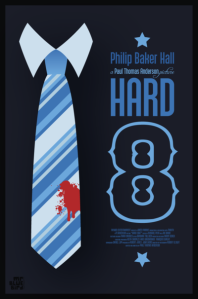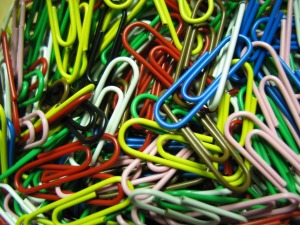Cigarettes and Coffee
Life’s recurring objects and their potential importance
In 1993 Paul Thomas Anderson1 released his first film, a 23 minute short titled Cigarettes & Coffee (available on YouTube in a resolution that no way surpasses 12 pixels). Three years later Anderson puts together Hard Eight, a full feature which borrows and ultimately builds upon C&C’s Panavision™ premise. You can find it on Netflix®.
Unsurprisingly, Hard Eight’s repeated motifs are cigarettes and coffee. In the prologue an old stranger offers to buy a down-and-out gambler a cup of coffee, and once sat in the café booth the younger man requests a cigarette. When they finally leave, PTA zooms in/frames the coffee mugs and ashtray, dead central there on the table, a little steam still hovering about. This opening shot sets a precedent, and as the emotional tale of recklessness, companionship and bad decisions (especially in the casinos of Vegas) moves on, we see coffee and cigarettes reappearing again and again, as if the characters’ primary sustenance is drawn directly from these items upon which they’re always smoking and/or sipping. What this pattern does, it seems, is draw a line through the narrative. To use a heavy-handed abstraction, imagine a nice juicy peach is the story and you stick a needle or a chopstick right through that thing. There are your cigarettes and coffee. The day to day, hour to hour happenings by way of certain objects that keeps the momentum of normal life going, the girders holding the foundation of these characters’ shaky lives in place (and if you think these are grandiose terms to describe coffee with I suggest you speak to someone who owns an AeroPress™).
The weird comfort of routine.

Image by Mr-Bluebird: http://mr-bluebird.deviantart.com/
You don’t have to focus on Cigarettes & Coffee to see this, either. Take Frank Lucas (Denzel Washington) in American Gangster, the Harlem drug-lord who starts each morning with coffee at the same diner, or ‘Verbal’ Kint (The Usual Suspects) repeatedly asking for coffee before he can answer the interrogators questions, the coffee mug itself providing a clue to the identity of Keyser Soze, or Pulp Fiction‘s Jimmy (Tarantino himself) lamenting the terrible coffee his wife Bonnie buys (“I buy the gourmet expensive stuff because when I drink it I wanna taste it”), Samuel L. Jackson and John Travolta themselves covered in blood and brain matter whilst they sip on a drink two steps above the usual “freeze-dried Taster’s Choice™” (poor Marvin). Then there are the countless movie characters who smoke cigarettes so frequently that it appears odd when they’re not lighting up. So is it just window-dressing, to have a Starbucks® cup in every Fight Club scene, for so many crucial dialogues to take place over coffee or a cigarette break out back… or is there more to it than that? (Aside from the consumerism angle of course, e.g. isn’t it funny how we buy the same things all the time, the dual acts of purchasing and repetition killing us slowly and painlessly – but that’s another discussion2).
This wasn’t meant to be a piece about film. It’s more an observation that, in cinema as in life (how often can you say that?), there are these objects, fairly mundane in and of themselves, which intersperse day to day life in such a way that they seem integral to our existence. I drink three large cups of tea a day (brewed ideally to within an inch of its life) but I couldn’t actually describe the taste of ‘tea’ to you because I’ve had it so much. It’s just there. I’m not talking about fruit or herbal teas, by the way, these primary colour packets singing the praises of echidnae or dragon fruit (as delightful as they are), or fancy coffee which is more a special thing than an everyday thing, no, we’re talking standard issue freeze-dried-molecule coffee or capital-T Tea, best served copper-brown, the building blocks a successful 24 hours. So yes, whilst there do exist subtle differences between Typhoo and PG Tips, I definitely don’t know what they are, and so in a way tea just kind of becomes this backdrop to whatever else it is I’m doing. You see, as a general rule I don’t have a cup of tea for tea’s sake, to stare solely at the tea, to reflect on the notes of evergreen and its links to the Tang dynasty, because like any other young Millennial3 (what a horror-show of a term) I’m called to be dynamic and to be doing all sorts of different things at once. “No time for the afterthought,” sings Anthony Kiedis4. No time to appreciate the tea and its tea-like qualities, in the way you might appreciate a Turner painting. You see adverts of attractive people sat on their squeaky-car-bonnet-clean sofas, alone, drinking tea or coffee and pulling faces of intense pleasure/joy (eyes closed, normally), but who actually does that? In this day and age The Tea or The Coffee or The (e?)Cigarette props up other things that’re going on.
There’s a magpie sharpening his or her beak on an aerial outside, which is a shoe-in for the Top 5 Most Interesting Things I’ve seen this week.
Perhaps, though, this perspective is an affront to tea and coffee. Talking to some people these drinks can seem both mundane and an irreducibly complex art form, simultaneously. Not to be taken so lightly as to be shunted into the background of things. They may well be too interesting an example of life’s recurring objects. Tea, after all, is fantastic and can be appreciated on its own terms, like Tarantino and his gourmet coffee, if forcefully extracted from the hectic and fuzzy arenas in which it’s forced to act as backdrop. If you choose to usurp the natural order and just sit there drinking tea, not as fuel or laptop fodder or as that thing you do every day at 7:49am, you could actually enjoy that cup of tea. Good company and well-kept coffee shops can help with this; like alcohol, or knitting, there seems a distinct difference in the experience of ‘doing it at home’ compared to within an establishment purpose built for the activity. Then there’s the issue of tea (the stuff worth drinking anyway), coffee and tobacco all containing drugs which affect the body. Remove these from someone’s life and the effects are usually more dramatic because of this factor. (Can’t really comment on tobacco as a non-smoker, although the way it’s been overtaken by ramen5 as US prison inmates’ bargaining currency of choice is an interesting development.)
What about other equivalents, these day-in-day-out objects? More simplistic ones, ones that aren’t consumables (like cereal boxes, Soreen™, Andy Warhol’s baked beans). The contemporary office workspace is full of them. The office notebook (Pukka Pad™) for example, which if dug out of a time-capsule would make our point in history seem obsessed with steering-group meetings, line managers, workflows, “sanity checks” and sub-standard pen-smudged doodles. Plastic bull-clips, brashly coloured like different acids, the midget gems of the office. Paperclips of all sizes, some so big they’d surely classify as operational machinery. Indeed, the entire back catalogue of Consortium® stationary. The milk rota. It won’t go away for as long as the office format exists, the tribal requirement for milk to be present at all times. The air conditioning and its relative temperature, to be more abstract. Remove these items from the office environment and I wonder whether the whole thing would just collapse like Jenga™.
Train tickets. Hand towels. Carrier bags (4-10p in value depending on your chosen supermarket). TV remote controls. Mirrors. Cutlery (metal, plastic or otherwise). McDonalds. Profile Pictures. G-C-Em-D. Deodorant. 3-pin plugs and their corresponding sockets. Iconic, a lot of these, in their own way.
So this, perhaps, a certain wonder surrounding The Tea and The Coffee and such things. What if the very fabric of modern polite society was being held together by a bodge-jobbed gaffer-taped superstructure of non-perishable food, hot drinks, bull-clips and sticky notes? I guess that’s the general thrust of this muddled piece (the author of which is running at a mere 1/3 on the cup-of-tea-o’meter its conclusion). The landscape of film presents it in an interesting way, I suppose, where cigarettes and coffee find themselves accompanying moments of tragedy, heroism or simply boredom. The ever-presents, shovelled in massive quantities into the furnaces that keep the system running, like coal into a steam engine. Maybe the reason we appreciate tea so much is because of its fundamental, foundational qualities. You can have good conversation without it; but often the best conversations require it, somehow. Tea as enabler (if this was an academic paper I’d use this as its pretentious title, followed by a colon and a detailed description of what the argument is about, if there was one6).
I was walking up the road to a meeting this week and there was another guy travelling in the opposite direction. We both clutched a notepad and pen (both as well wearing profoundly semi-colourful shirts that weren’t garish or risky), on our separate ways to separate meetings. We both quickly realised, because of the way we bore our notepads like a coat of arms, what the other man was up to. Imagine the motion-picture scene, as two young working men stride past each other on the street and share a knowing glance, as if to say “yes, we’re in the same exact position here, and isn’t that funny.” The mundane notebook and pen combo, bringing folks together.
The poignancy of the event was so severe that I almost struck a lamppost in passing.
Notes
1 Director of There Will Be Blood, The Master, Inherent Vice, Magnolia, Boogie Nights and Punch-Drunk Love. A truly great filmmaker.
2 It wouldn’t be a proper 21st century blog post without mentioning consumerism after all would it?
3 The young Millennial of course sits at his/her computer most of the day, sleeps late, eats badly, owns a camera, knows how to use Photoshop™, and finds face to face conversation stressful (at times actually quite distressing) without being at all obvious about it.
4 Dark Necessities, from The Getaway (2016).
5 Because it’s “cheap, tasty and full of calories”: http://www.bbc.co.uk/news/world-us-canada-37162373
6 Thus I’ve deployed a few footnotes (and the term thus) to make this whole thing seem a bit more sophisticated and worthwhile. Also, can you tell I’m reading Infinite Jest7 right now?
7 David Foster Wallace famously makes heavy use of footnotes in his novel: http://infinitejest.wallacewiki.com/david-foster-wallace/index.php?title=Notes_and_Errata_-_Pages_983-1079

